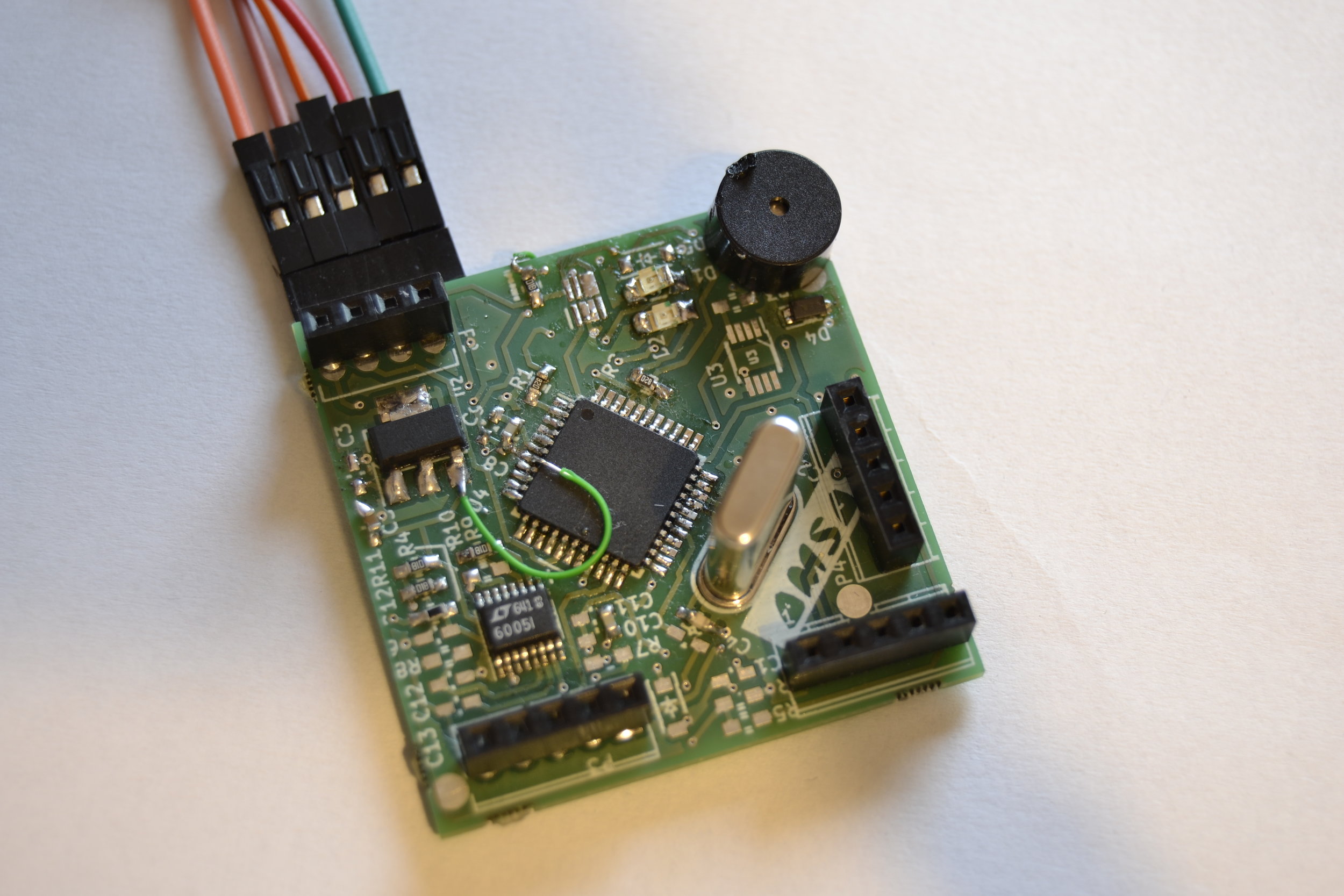We've caught up with Felix Paez from the EASAT-2 programme from AMSAT-EA. They are building Spain's first PocketQube. Here's Felix with a bit more about the project:
How did you hear about the PocketQube Format?
Looking for information about small satellites we found the Eagle2 ($50SAT) which, as many people know now, is a 1.5 PocketQube launched in 2013. Until then, all the satellites we had seen when looking for inspiration were made in the Cubesat format. It was a happy discovery for us to know that there was a new satellite architecture available, smaller, cheaper and already in space. It would also mean that launch costs should be smaller, allowing access to space to groups with small financing capabilities, as would be our case, an organization working through donations.
IHU Unit (it has a buzzer so the developers can hear the CW beacon).
Tell us a bit about your PocketQube Project
Basically our project is a small PocketQube 2P space communications repeater for HAM use. HAMs are people with a valid radio license that enjoy it as a hobby and/or for experimental uses. The satellite will carry a transponder allowing communications in long distances using small FM hand held transceivers with portable antennas as well as SSB communications for people with better working conditions. It will have too a CW (Morse) beacon in the same frequency that will allow all the people interested in it to know about the internal satellite status, as would be the temperature inside the structure. The modulation for commands will be ASK, and maybe if some experiment is finally held inside it, ASK downlink telemetry too. People don't need a license just to receive or listen the transmissions from this kind of satellites so the data could be retrieved by anyone.
Why choose a PocketQube form factor?
Mainly because the satellite itself and the launch costs will be much smaller compared to a Cubesat, but also because it is a challenge to use a form factor that very few people has used before. We would like to be an inspiration for other small groups as well.
Where did the idea come from, what is the objective?
The three persons that started this project, myself, Daniel Estévez and Eduardo Alonso, are passionate HAMs, with radio-callsigns EA4GQS, EA4GPZ/M0HXM and EA3GHS. We love making contacts (QSOs in HAM argot) using all the low earth orbit satellites (LEO) available to HAMs. Within these activities we found that some of these satellites were very popular, with some of them being even used by people as young as 13, as would be the case of Eugene UR3QTN and his sister Svetlana UR5QSS in Ukraine, because they require only an small FM hand held radio and a little directional antenna that can also been built by one itself as in the case of these kids, being also very easy to operate. The problem and opportunity we found, was that only three of these 'easy' sats were available at that time: SO-50, FOX-1A and LilacSat-2, always very crowded so... why don't to start a small sat project ourselves so another satellite would be available to people with small possibilities and with the wish that other people and institutions as Universities could join later with workforce and funds?
A 3D Printed Structure for the EASAT-2
What do you do outside building your PocketQube?
Other activities our organization AMSAT-EA is involved with are teaching other to communicate using satellites, the experimental work associated with it, and of course, helping others to develop their own projects. Many of our members enjoy other activities inside the radio world, as short wave communications, building their our receptors, etc. Some are engineers with lot of experience while other have jobs not related at all with electronics or communications. We are a very heterogeneous group indeed.
What does the future hold?
We see an increasing interest in space among the young people and particularly in the satellite world. This includes people operating HAM satellites, collecting telemetry, getting weather images from them and thinking about new projects and applications. Getting to the young people at Universities seems to be the key to this future that's opening now and that some people begin to call "the New Space": space activities driven by small companies and groups and not by states anymore. I think we will see lots of small satellites doing things that we have never seen before.
What are your top tips for budding PocketQube builders?
My top tips would be: get inspiration as well as information from related PocketQube projects, because there is not as much information out there as there is for Cubesats. Look at what others have done before and how and try to learn lessons from it. Also when using COTS parts it is a good idea to use the same ones (CPUs, solar cells...) others have successfully used in their projects so you don't need to go thought a space certification process yourself. It is important too, as in any other projects, to have a clear and realistic mission definition suitable for the platform.
What is your definition of success?
Success is having everybody happy and proud of their work, no matter if the project can't reach its final stage of being in orbit because of restrictions such as funds. The important thing is having learned and participating in a very interesting challenge with other people that share the same interests and goals as you.


